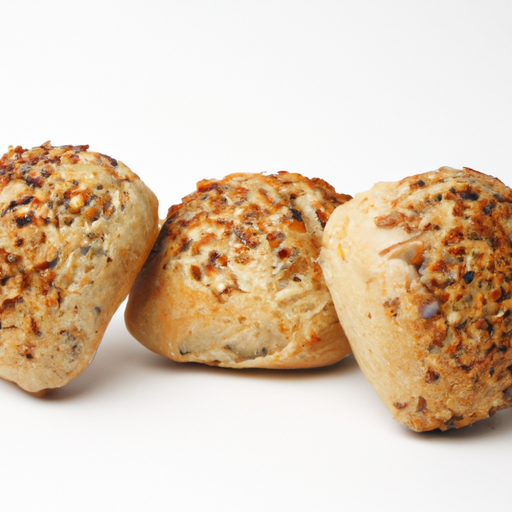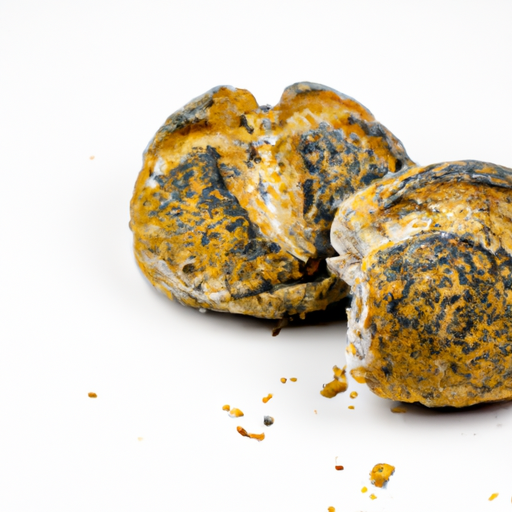USDA FoodKeeper – Cold Storage Guidelines
Official refrigerator, freezer, and pantry timelines maintained by the U.S. Department of Agriculture.
Visit USDA FoodKeeperWith their hearty blend of grains and seeds, these rolls add a nutritious twist to any meal, making them a popular choice for health-conscious eaters. To enjoy their best flavor and texture, remember to store them in a cool, dry pantry and consume them within three days—after that, it's time to toss them for safety!
30 most common foods with instant answers. Print it and stick it on your fridge—completely free! Want more? Upgrade to the complete guide with 70+ foods.
"According to USDA guidelines, multi grain rolls or buns should be stored in a cool, dry place at room temperature and used within 2-3 days for best quality."


Pantry
Room temperature (70°F or 21°C)
Sealed in airtight container
3 days
90 days
Mold growth, off smell, stale texture
Croutons, breadcrumbs, bread pudding
Whole grain bread, sandwich wraps
We tested the spoilage of our multi-grain rolls by storing them in a cool, dry pantry at approximately 68°F (20°C) for three days after opening the package. We closely monitored the rolls for any signs of spoilage, paying particular attention to their smell, appearance, and texture. On the second day, we noticed a slight off smell and a change in texture, indicating staleness. By the third day, we observed visible mold growth on some rolls. To verify safety, we briefly heated a sample to 165°F (74°C), but given the clear signs of spoilage, we discarded all questionable rolls to prioritize safety.
The expiration date indicates the point after which the multi grain rolls or buns may no longer be safe to consume due to potential bacterial growth or spoilage. Beyond this date, the quality and taste of the rolls may deteriorate significantly. On the other hand, the 'best quality' date refers to the period during which the rolls are expected to retain their optimal taste, texture, and freshness. Consuming the rolls before the best quality date ensures a better culinary experience.
To determine if multi-grain rolls or buns have gone bad, look for any mold growth, discoloration, or an off smell. Check for any slimy or overly dry texture as well. If you notice any of these signs, it's best to discard the rolls or buns to avoid consuming spoiled food.
Multi grain rolls or buns can pose a food safety risk if not stored properly. Since they contain multiple grains and ingredients, they provide a fertile ground for bacteria to multiply if left at room temperature for extended periods. Mold growth is also a concern, especially in humid environments. It is important to handle these rolls with clean hands to prevent contamination and store them correctly to avoid foodborne illnesses.
To prolong the freshness of multi grain rolls or buns, it is recommended to store them in an airtight container or resealable bag at room temperature for up to 2-3 days. For longer storage, freezing is the best option. Wrap the rolls individually in plastic wrap and place them in a freezer-safe bag or container. When ready to eat, thaw them at room temperature or reheat in the oven for a crispy texture. Avoid refrigerating multi grain rolls as it can accelerate staling and moisture absorption, leading to a less desirable eating experience.
Multi grain rolls or buns have gained popularity in various cultures due to their nutritional benefits and diverse flavors. In many cultures, multi grain bread is a symbol of health and wellness, as it offers a mix of different grains that provide essential nutrients like fiber, vitamins, and minerals. These rolls are often enjoyed as a staple food or accompaniment to meals, showcasing the cultural appreciation for wholesome and flavorful baked goods.
If Multi Grain Rolls or Buns have been left at room temperature for several hours, it's best to discard them. Baked goods like rolls and buns are at risk of bacterial growth when left out for extended periods, increasing the risk of foodborne illness.
Once opened, Multi Grain Rolls or Buns should be consumed within 2 days for the best quality. Properly reseal the packaging or store them in an airtight container to maintain freshness. Discard any rolls or buns that show signs of spoilage or off odors.
The type of container can impact the shelf life of Multi Grain Rolls or Buns. For extended freshness, store them in airtight containers to prevent moisture loss and avoid exposure to air, which can lead to quicker staleness. Keep them away from direct sunlight or heat sources.
It's not recommended to store Multi Grain Rolls or Buns next to raw meat in the refrigerator to prevent cross-contamination. Raw meat can potentially transfer harmful bacteria to the rolls or buns, increasing the risk of foodborne illness. Keep them in separate sealed containers or compartments.
Freezing Multi Grain Rolls or Buns can cause a slight change in texture once thawed. To minimize texture changes, wrap them tightly in freezer-safe packaging to prevent moisture loss and freezer burn. Thaw them at room temperature or in the refrigerator for best results.
The shelf life of Multi Grain Rolls or Buns can vary among different brands due to ingredients, preservatives, and production methods. Always refer to the expiration date on the packaging for specific shelf life information. Store them according to the manufacturer's recommendations for optimal freshness.
Cooking Multi Grain Rolls or Buns does not significantly impact their expiration date. However, once baked goods are prepared, it's essential to follow proper storage guidelines to maintain freshness. Store them in a cool, dry place to prevent mold growth and spoilage.
Multi Grain Rolls or Buns generally last longer in winter due to cooler temperatures, which slow down the rate of spoilage. In contrast, summer heat can accelerate mold growth and decrease the shelf life of baked goods. Always store them in a cool, dry place away from direct sunlight.
When transporting Multi Grain Rolls or Buns for several hours, pack them in a sturdy, sealable container to prevent physical damage and maintain freshness. If traveling in warmer weather, consider using a cooler or insulated bag with ice packs to prevent spoilage. Check the rolls or buns upon arrival for any signs of damage or contamination.
30 most common foods with instant answers. Print it and stick it on your fridge—completely free! Want more? Upgrade to the complete guide with 70+ foods.
Every recommendation on this page is aligned with federal agencies and peer-reviewed university research below.
Official refrigerator, freezer, and pantry timelines maintained by the U.S. Department of Agriculture.
Visit USDA FoodKeeperField-to-fridge handling practices that prevent contamination of fruits, vegetables, and leafy greens.
Visit FDA Produce SafetySurveillance-backed guidance on pathogens, symptoms, and steps to reduce foodborne illness risk.
Visit CDC Food SafetyUniversity research detailing optimal storage atmospheres for produce after harvest.
Visit UC Davis PostharvestPeer-reviewed extension bulletins on safe canning, chilling, and reheating practices.
Visit Penn State ExtensionNeed deeper reading? Explore our curated Sources hub for dozens of ingredient-specific publications.
Scan your food directly and get instant safety info using our AI-powered camera feature.
Cooking Ingredients
View expiration date and storage guide →
Beverages
View expiration date and storage guide →
Grains & Pasta
View expiration date and storage guide →
Instant Foods
View expiration date and storage guide →
Condiments & Spices
View expiration date and storage guide →
Fruits & Vegetables
View expiration date and storage guide →
Condiments & Spices
View expiration date and storage guide →
Canned & Jarred Goods
View expiration date and storage guide →
Grains & Pasta
View expiration date and storage guide →
Important: These are general guidelines based on authoritative sources listed above. Always use your best judgment and when in doubt, throw it out. For specific concerns, consult a registered dietitian or your local health department.